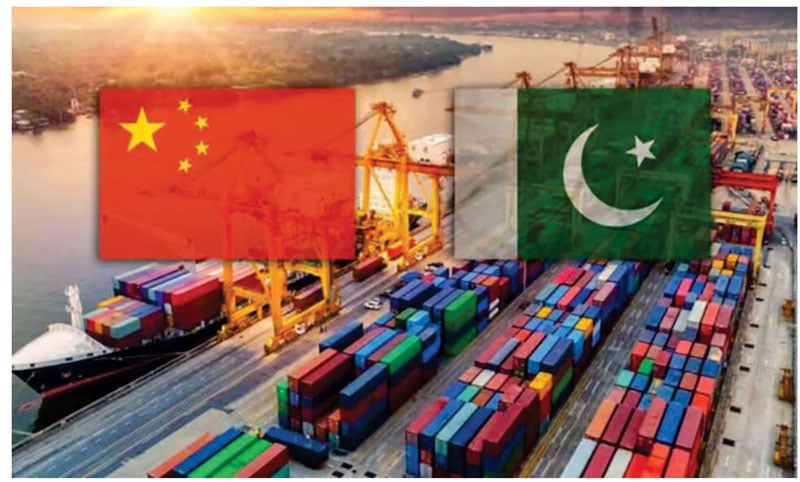The China-Pakistan Economic Corridor (CPEC), a flagship project of the Belt and Road Initiative (BRI), continues to serve as a transformative force for Pakistan, much like Roosevelt’s New Deals in the United States during the Great Depression. In an era where the global economy faces nationalism, political fragmentation and economic instability, CPEC offers Pakistan a critical opportunity to leapfrog these challenges and drive sustainable economic growth, regional connectivity and infrastructural development.
A Vision for Sustainable Economic Growth: Pakistan continues to grapple with numerous economic challenges such as stagnation, high unemployment, demographic shifts and a lack of skilled labour. Geopolitical tensions and governance issues have compounded these challenges. However, CPEC provides a unique opportunity not only to address immediate infrastructural needs but to lay the foundation for long-term economic sustainability. The development of the Gwadar Port, coupled with energy and transport projects, is integral to revitalizing Pakistan’s industrial and service sectors.
CPEC’s Transformative Potential: Much like Roosevelt’s New Deals, CPEC aims to reshape Pakistan’s economy through infrastructure development, energy projects and job creation. The road networks, railways and energy projects under CPEC are essential for driving trade, improving energy security and generating thousands of jobs, which is crucial for tackling youth unemployment. The recent acceleration of projects like the Green Energy initiatives and the upgrading of transport infrastructure further enhance the prospects for long-term economic stability.
Addressing Pakistan’s Infrastructure Needs: CPEC’s infrastructure development remains a cornerstone of Pakistan’s economic strategy. The construction of roads and highways, particularly the Gwadar Port, is central to this vision. Gwadar, strategically located on the Arabian Sea, has the potential to become a major international trade hub. The ongoing projects, including port expansion and the development of the China-Pakistan rail link, align with Pakistan’s broader goal of connecting regional and global markets. These developments are expected to reduce logistics costs, boost trade and enhance Pakistan’s competitiveness.
Energy Security and Job Creation: Pakistan’s energy crisis remains one of the country’s most pressing challenges. CPEC’s energy initiatives, including power plants and renewable energy projects like the Thar Coal and Karot Hydropower Projects, have already started to alleviate energy shortages. These initiatives aim to reduce reliance on expensive imports, addressing both the energy crisis and unemployment through job creation. The integration of renewable energy sources into the energy mix is also in line with Pakistan’s growing commitment to sustainability.
Enhancing Regional Connectivity: The regional impact of CPEC has only grown since its inception. The project’s role in connecting China’s western region to Gwadar Port has enhanced Pakistan’s position as a key player in regional trade. By facilitating trade between China, South Asia, the Middle East and Africa, Pakistan is poised to become a critical link in global supply chains. The growing importance of China-Pakistan trade routes, particularly in the wake of the China-India tensions, underscores Pakistan’s strategic relevance.
Pakistan’s location, bridging Central Asia, the Middle East and Southeast Asia, strengthens its role as a regional trade hub. The new infrastructure will open markets for local businesses and enhance Pakistan’s appeal to foreign investors.
Geopolitical Implications and National Security: While CPEC continues to bolster Pakistan’s economic growth, it also has significant geopolitical implications. The strengthening of ties with China and the growing strategic importance of the CPEC route, will reshape Pakistan’s geopolitical position. However, this success requires delicate management of relations with regional neighbors, especially India and Afghanistan. Pakistan must continue to ensure the security of CPEC infrastructure, which remains vulnerable to both internal and external threats. Cooperation with China and other regional partners is essential to mitigate risks.
A Model for Governance and Institutional Reforms: CPEC’s success depends on effective governance, transparency and accountability. Pakistan must adopt best practices from Roosevelt’s New Deals to ensure the efficient management of resources. The establishment of transparent project monitoring mechanisms will help mitigate corruption and ensure optimal resource allocation. Furthermore, institutional reforms are necessary to empower local governments, improve the legal framework for investment and promote public-private partnerships.
A Blueprint for Pakistan’s Future: CPEC represents Pakistan’s best opportunity to address economic and social challenges while positioning itself as a regional leader. The recent acceleration of projects under CPEC, alongside Pakistan’s focus on energy and transport, is helping to diversify the economy and bolster its resilience. As the government continues to navigate economic uncertainties, it must harness the full potential of CPEC to drive growth, improve quality of life and strengthen its position in the global economy. With improved governance, regional cooperation and equitable distribution of benefits, CPEC could become the cornerstone of a prosperous future for Pakistan, helping the country overcome its current challenges and emerge as a stable, influential global player. (yasabirajk@gmail.com)










